Dr Jessica Studer is the Swiss ESA-sponsored medical doctor of DC20, the twentieth crew to spend a winter at Concordia research station, which lies on the Dome C plateau of Antarctica. Jessica will spend a winterover from 2023 to 2024 doing biomedical research in Concordia, a place more remote than the International Space Station.
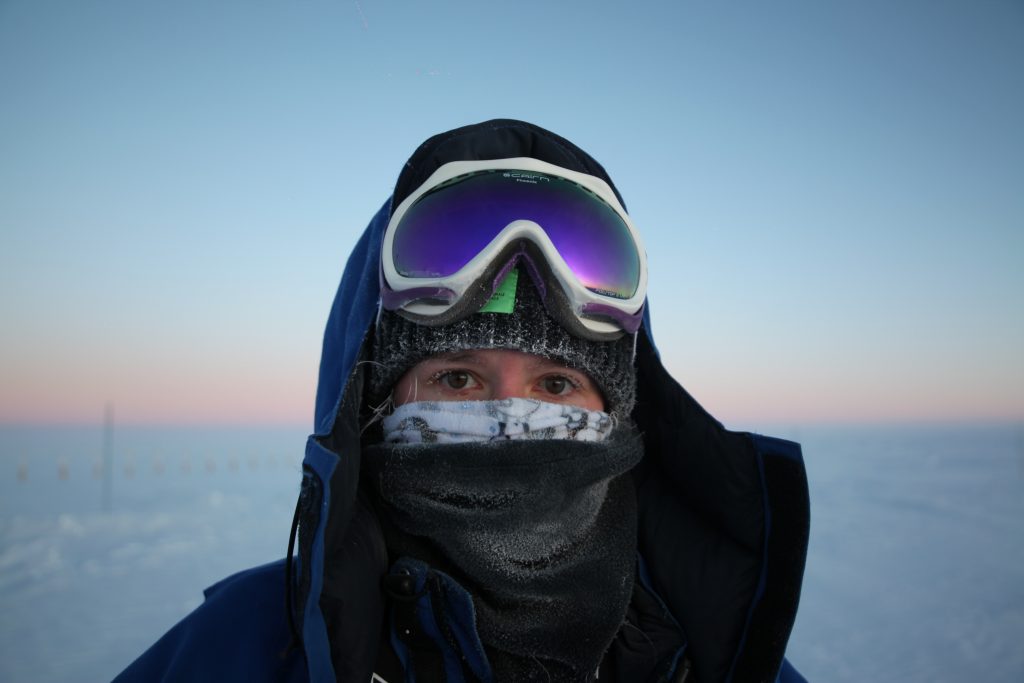
Credit: IPEV/PNRA/ESA-M. Lecca
Today, I want to take you on an analogue mission, one that mirrors the challenges and conditions faced by astronauts in outer space: Concordia. This station in Antarctica serves as a crucial analogue base and provides a unique platform for conducting research in the field of space medicine.
But what exactly is an “analogue station” and what does it entail to partake in an “analogue mission”?
Join me, along with French ESA astronaut Thomas Pesquet, as we embark on a journey to “white Mars” and discover how Concordia station serves as a parallel for studying human adaptation in space.
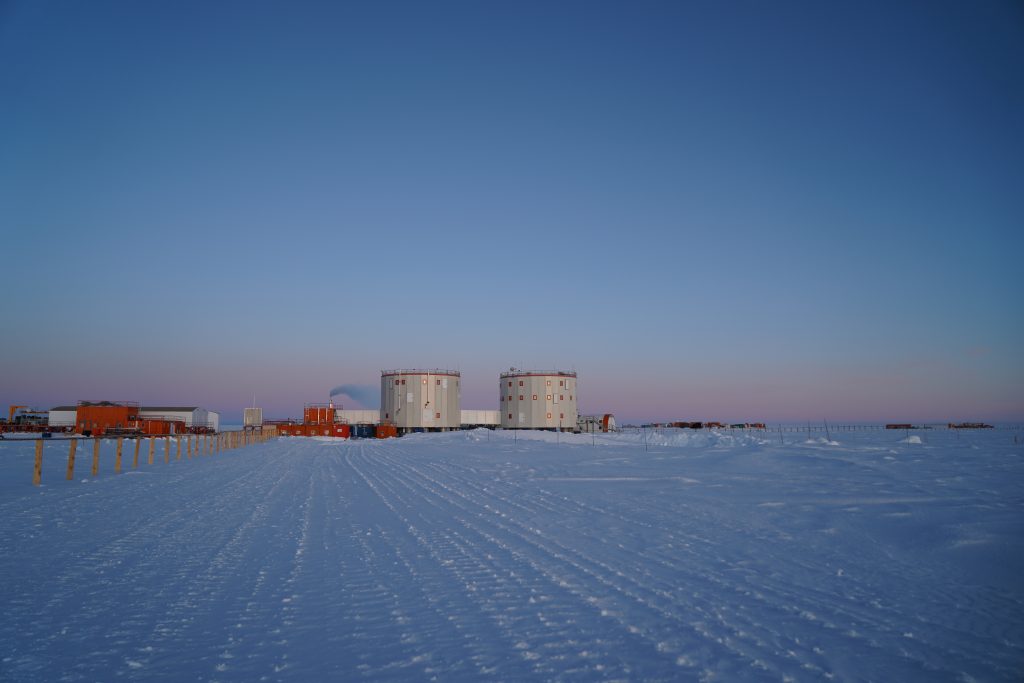
Credit: IPEV/PNRA/ESA-J. Studer
BLOG 2 – Concordia 23.05.24
Not all experiments and investigations can be conducted directly in space due to constraints such as time, financial resources and equipment availability. Therefore, researchers often resort to conducting what are known as analogue missions, where they simulate the conditions and scenarios encountered during space exploration, here on Earth. These studies are conducted in environments that closely mimic certain aspects of space travel, providing researchers with invaluable insights into the challenges and complexities of long-duration space missions. From testing cutting-edge technologies to refining operational protocols, analogue missions also serve as essential tools for preparing astronauts for the rigours of space travel without the need for actual spaceflight.
This year we had the chance to welcome Thomas Pesquet to white Mars!
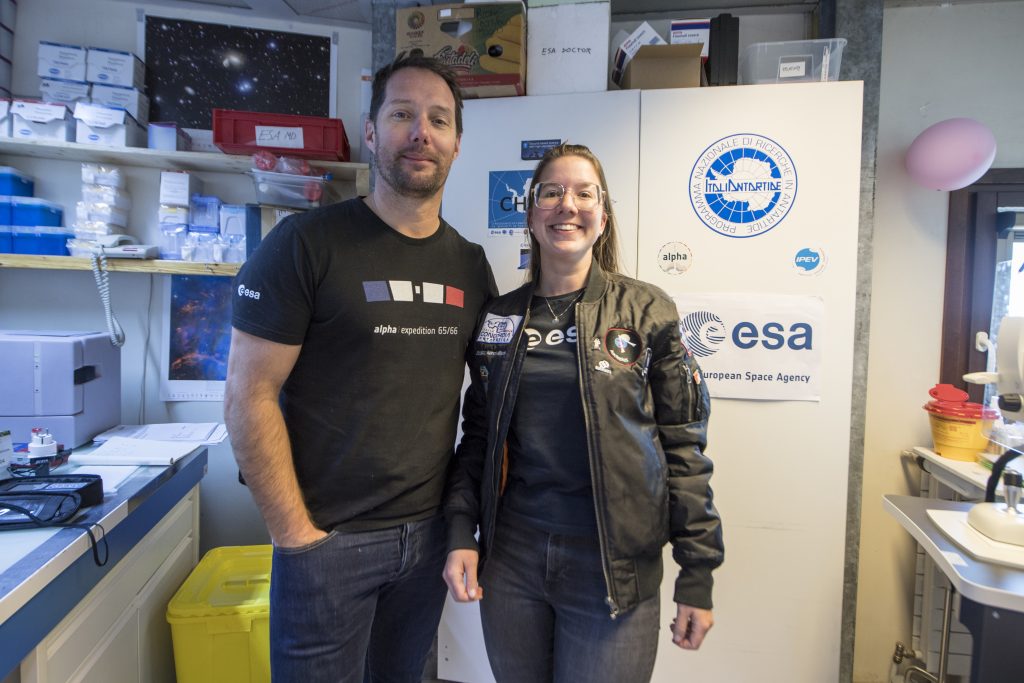
Extreme, most extreme, more extreme
The Antarctic continent is known for its harsh and unforgiving climate, characterised by bone-chilling temperatures, fierce winds and months of perpetual darkness during the winter months. At Concordia station, the “winterovers”, a crew of around 13, are isolated and confined during one year under these environmental conditions that closely resemble the hostile landscapes of outer space. This makes Concordia station an ideal parallel for testing equipment, technology and survival strategies in extreme environments. But living at Concordia station is not only about conducting scientific experiments or maintaining the station’s infrastructure; every aspect of life here demands meticulous planning and adaptation to the challenging conditions. Much like astronauts preparing for long-duration space missions, the winterover crew at Concordia undergo the extreme Antarctic conditions and engage in a wide range of scientific experiments aimed at advancing our understanding of human physiology, psychology and technology.
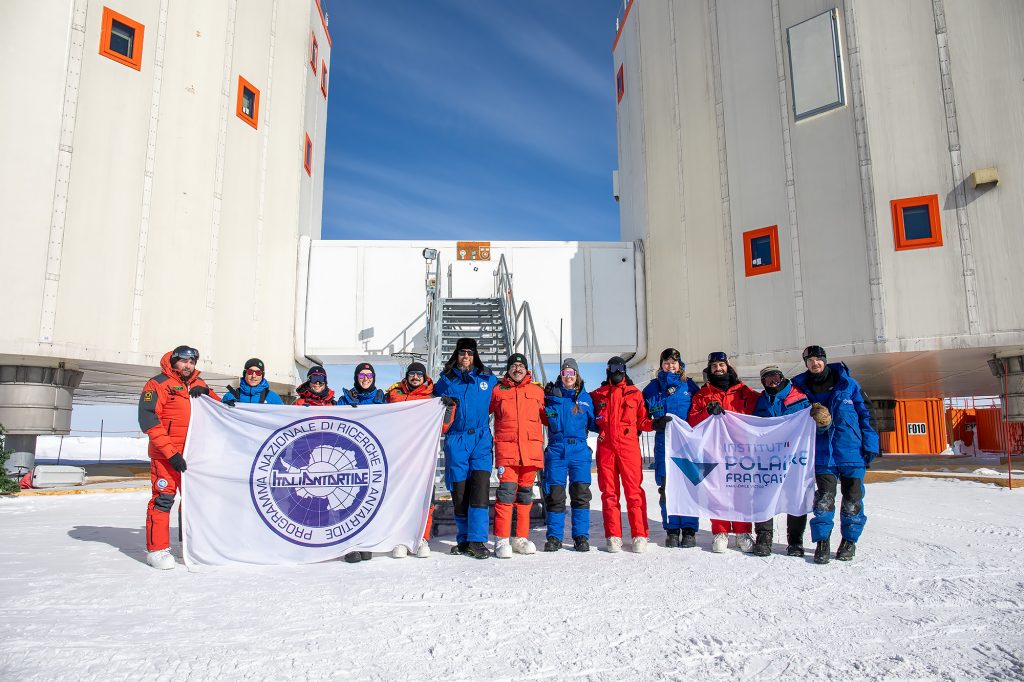
Credit: IPEV/PNRA/ESA-J. Studer
From Earth’s edge to Mars
It’s not for nothing we call Concordia “white Mars”. Travelling to the end of the world is not so different from travelling to Mars; in fact, our isolated research station shares many similarities with the red planet. Situated in one of Earth’s most extreme environments, Concordia experiences temperatures going down to -80 °C, akin to the icy chill of Mars which ranges from -60 °C to -125 °C. During the harsh Antarctic winter, our crew faces relentless winds and extended periods of darkness, mirroring the barren, icy landscape of Mars and giving us an idea of what life could be like for astronauts on the red planet. On top of this, Concordia’s altitude of nearly 3200 m, coupled with fluctuating air pressure, induces oxygen deprivation akin to even higher altitudes of 3900 m. This constant low-oxygen exposure mirrors the challenges astronauts face during extravehicular activities (EVA).
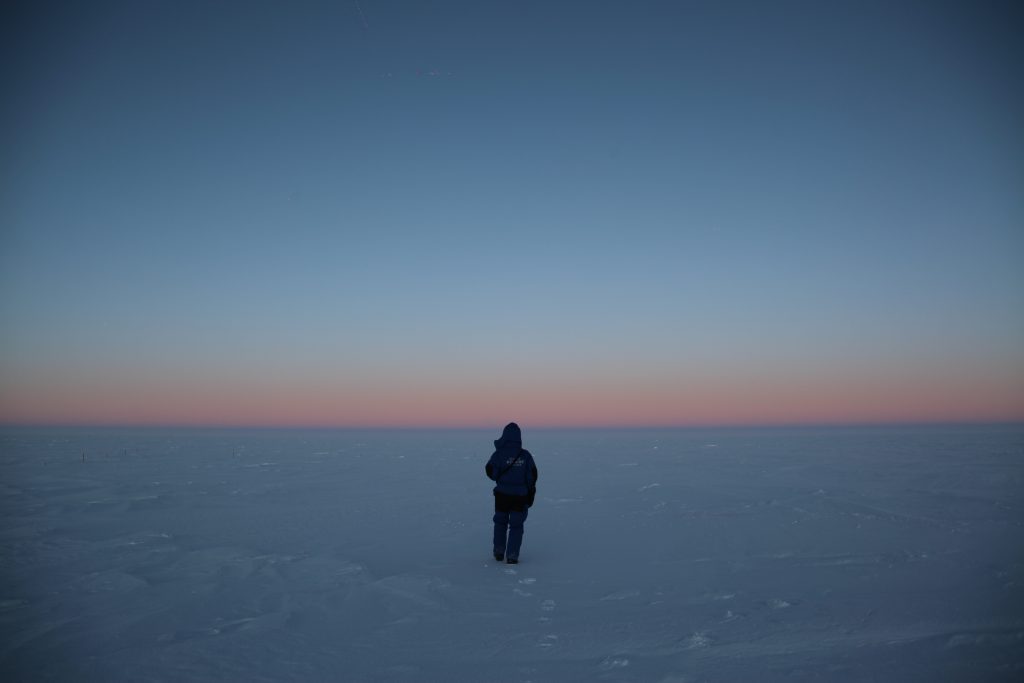
Human adaptation, an extreme challenge
As a research medical doctor with ESA, my role involves conducting experiments on both crew members and myself throughout our year-long stay at Concordia. These experiments cover a broad spectrum of physiological and psychological assessments, with a primary focus on understanding the long-term impacts of the extreme Antarctic environment on the human body. Among my duties is the collection of blood samples for analysis, examining parameters such as haemoglobin, haematocrit, blood gases, stress markers, oxidative-inflammatory responses, glucose metabolism and others. These analyses deepen our understanding of how the human body adapts to prolonged isolation and confinement at high altitude. The initial days of acclimatisation to this new environment are critical, so blood draws are conducted shortly after our arrival at the station. Given this, it’s not surprising that one of my first activities with Thomas was taking blood samples.
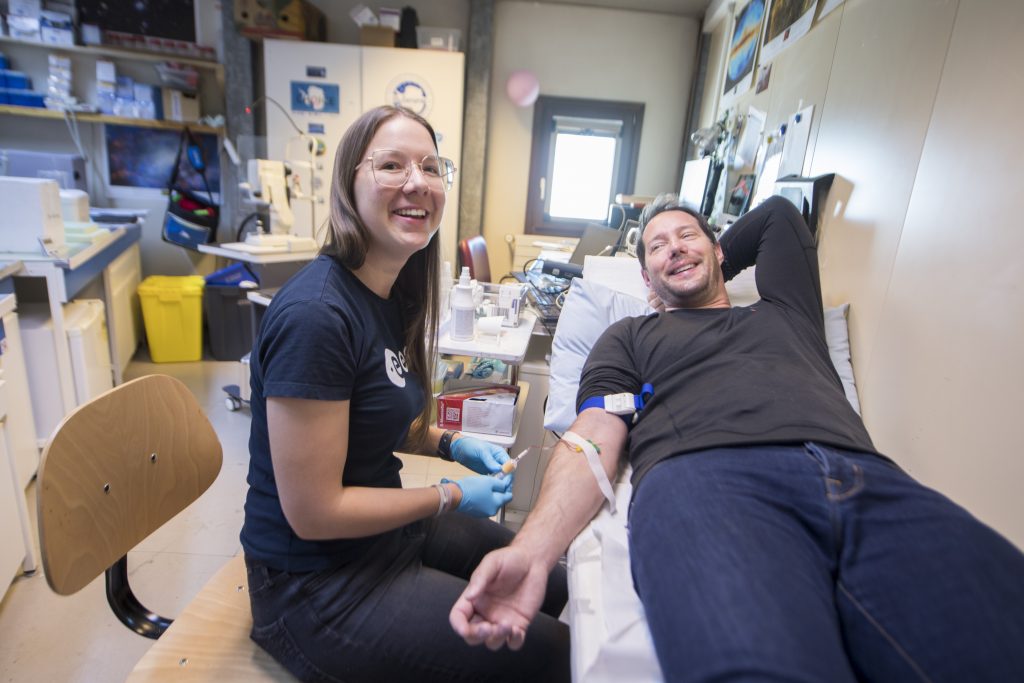
Mars, sure, but under what conditions?
Anticipating human exploration back to the Moon and beyond, future astronauts will be exposed to long EVAs and their challenges. During spacewalks, astronauts are exposed to the low atmospheric pressure of space, similar to the conditions we experience here on the Dome C plateau. Due to the high altitude, the oxygen availability is reduced our and crew at Concordia, called DC20, experiences the same condition that astronauts do, known as hypobaric hypoxia.
This condition can impact cognitive functions, decrease physical performance and pose serious risks during space walks. Due to the hypobaric hypoxic environment, being at Concordia is somewhat like continuously being on a spacewalk, so it helps us to better understand the adaptation process required. To monitor the changes in our bodies, we use ultrasound, a medical imaging method that uses high-frequency sound waves to create an image of a specific region of the body. Specifically, we are trying to measure blood flow in the intracranial blood vessels of the brain as well as extracranial ones to determine how the human body acclimatises to this harsh environment.

Credit: IPEV/PNRA/ESA-G. Tran
Puffy face, the need to pee and water in the brain
Similar to the space environment, individuals here in Concordia experience a phenomenon known as fluid shift. This occurs due to changes in atmospheric pressure and our body’s response to it. Since Concordia is located at high altitude, the atmospheric pressure decrees, causing a decrease in the pressure of gases within the body – this means there is less pressure pushing the fluids in the body, particularly in the lower extremities. This condition results in a redistribution of fluids and leads to symptoms we also see in astronauts, such as facial puffiness, increased urination and altered blood pressure. One consequence of this fluid shift can be cerebral oedema. To examinate this condition and its long-term effect on the brain, we perform a magnetic resonance imaging of the brain, or MRI, using the very first portable MRI machine in Antarctica.
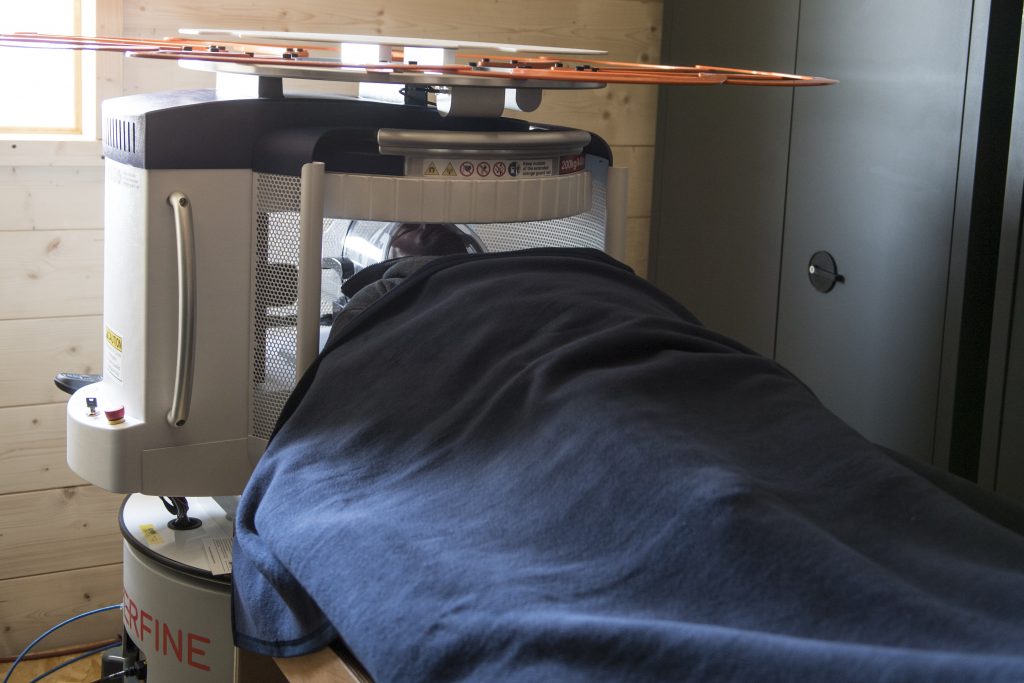
Credit: IPEV/PNRA/ESA-G. Tran
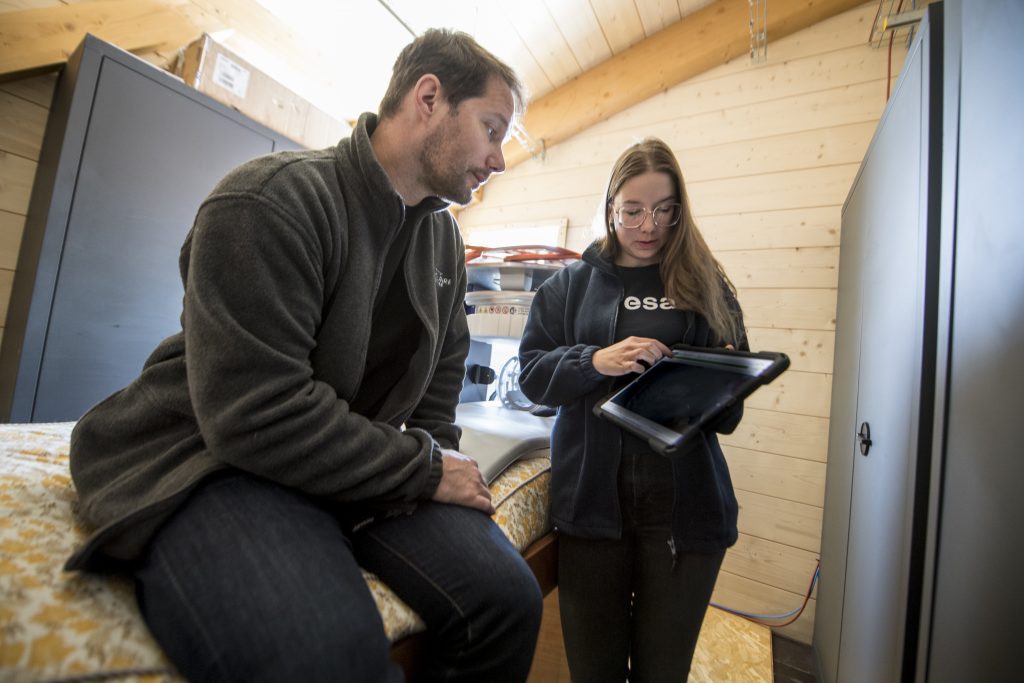
Credit: IPEV/PNRA/ESA-G. Tran
My eyes, my eyes
Another tool to measure an increase in cerebral pressure and redistribution of fluids in the eyes is an optical coherence tomography (OCT) – maybe you have seen Alexander Gerst using this technology on the International Space Station to monitor the health of his eyes during his mission. Astronauts in space often experience changes in visual acuity, or eyesight, due to an increase in intracranial pressure. Since we are exposed to similar conditions, we monitor these changes by looking at the optic disc of the eye. The OCT is a non-invasive diagnostic tool that creates a map of the retina; this is done using an imaging method called interferometry, which uses reflected light to create a picture of the back of the eye. Even Pingu wanted to give it a go.
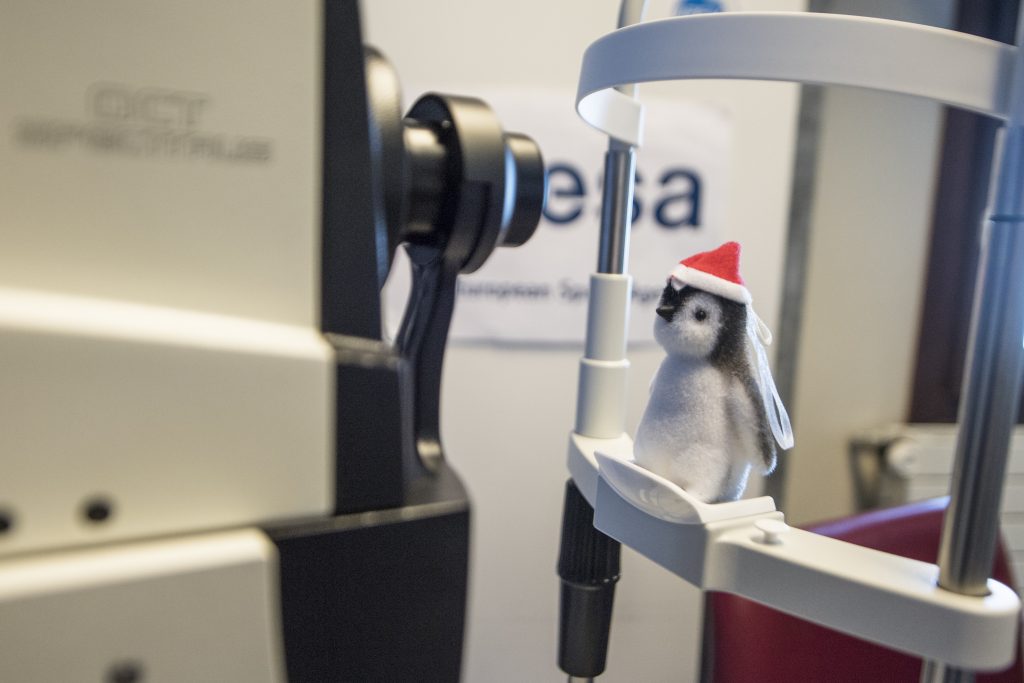
Credit: IPEV/PNRA/ESA-G. Tran
The before and after of analogues
For an analogue mission, measurements are usually first taken under “standard” conditions that act as a baseline compared to the more “extreme” conditions. This baseline data collection (BDC) is performed at DLR, the German National Aeronautics and Space Research Center next to ESA’s European Astronaut Centre (EAC) in Cologne. Two measurements are taken: one before the mission in Antarctica and one after. This allows us to gather information about the human body under standard circumstances and to be able to compare the values.
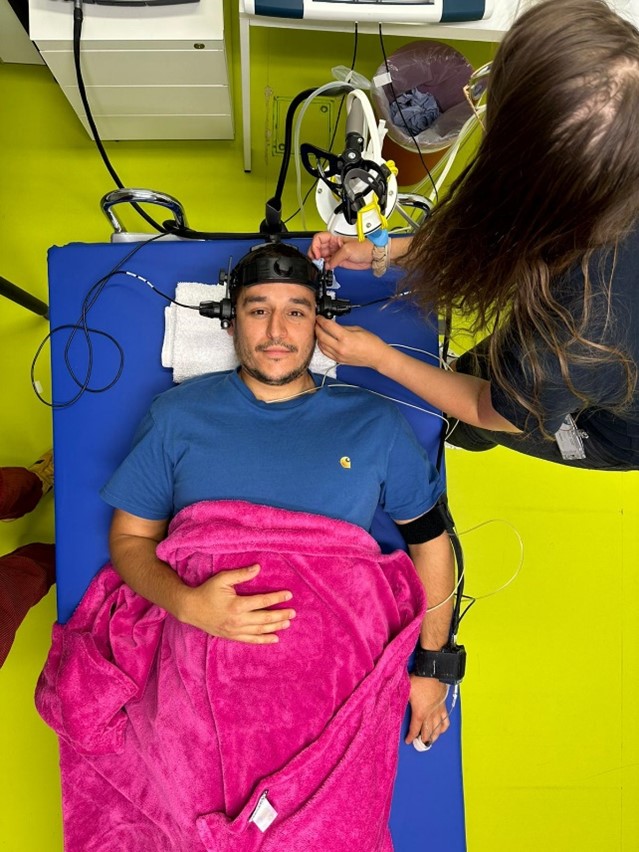
Credit: IPEV/PNRA/ESA-G. Tran

Credit: IPEV/PNRA/ESA-M. Balke
The Antarctic analogue
Concordia showcases humanity’s ability to adapt and endure in the most challenging conditions. Our mission is to live, work and survive here. It is a mission that serves as a vital hub for advancing our knowledge of human spaceflight, offering insights into the physiological and psychological challenges faced by astronauts during long-duration missions. With our work, we hope to push the boundaries of human space exploration beyond low Earth orbit. We’re keeping our (cold) Antarctic fingers crossed that we will soon see our astronauts not only on board the International Space Station, but also the Moon!





Discussion: 5 comments
Always interesting to read the notes from Concordia. Thank you for your work and dedication.
Being a biotech Er. & Researcher, this blog is quite interesting to understand and correlate complexity of natural phenomenon into different atmosphere. And it provides some research gaps that allow my vision to work upon that. Data integration & representation is written in very good manner.
A very big thank you for the interesting presentation and explanation, for the expansion of our knowledge regarding research on our earth, space, and the associated challenges on the human body!
E’ affascinante cercare di vedere e capire ciò che è diverso dalla “normalità” a cui siamo abituati. Circa 12 anni fa io e gli studenti e studentesse di una mia classe prima del liceo scientifico hanno fatto un bella chiacchierata con ori e ricercatrici della stazione concordia. Hanno posto tante curiosità ricevendo sempre una risposta pertinente che li aveva affascinati/e. alcuni alunni di queta classe hanno seguito percorsi legati alla ricerca STEM alcuni fisica, altri biotecnologie, medicina e tanto altro. Lo stimolo lo avevo ricevuto io in primis frequentando un corso su scienze polari. Mi aveva entusiasmato perchè mi ha permesso di conoscere un luogo a me sconosciuto terribile , estremo ma bellissimo. Avevamo fatto tanti esperimenti polari e partecipato ad eventi STEM facendo conoscere questo luogo a studenti e visitatori.
I really appreciate this blog! it is explanatory and gives detail to the mesearument taken in relationship with space research project
I wonder what type fo phyisical activity (both in the gym and recreational) researchers at the station are doing and how it effects their physiological and psychological axpects. I tryed to find images or informations of the station gym, but i was unsuccessful.
Thanks again for this blog!